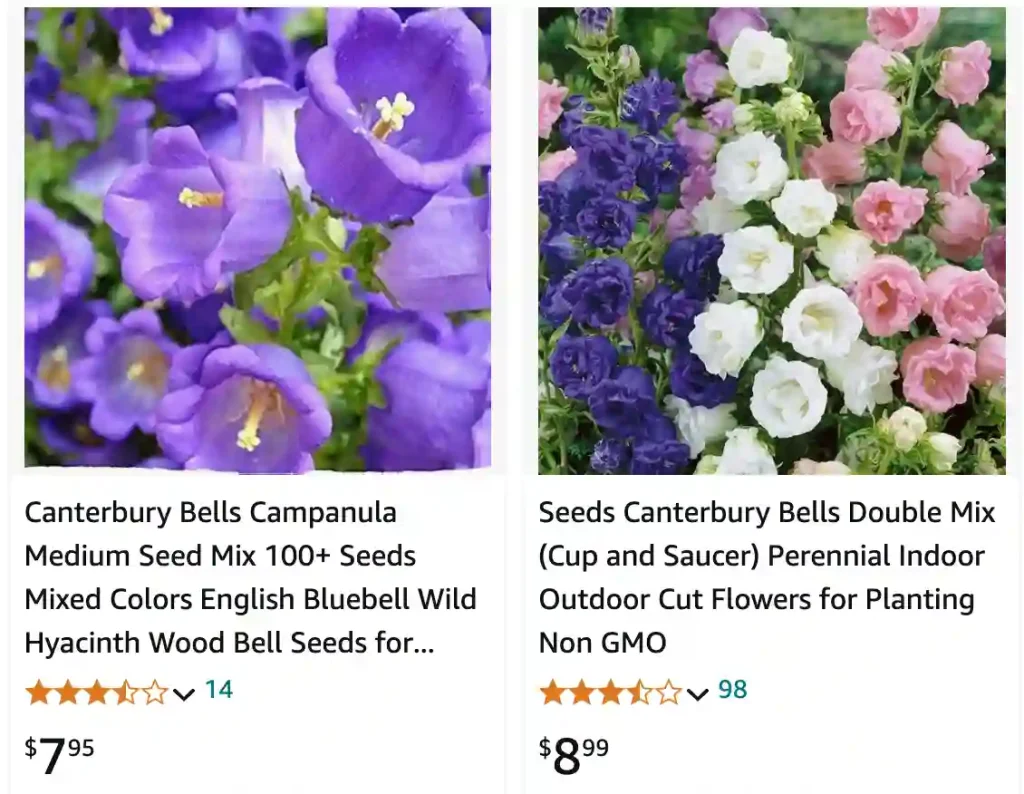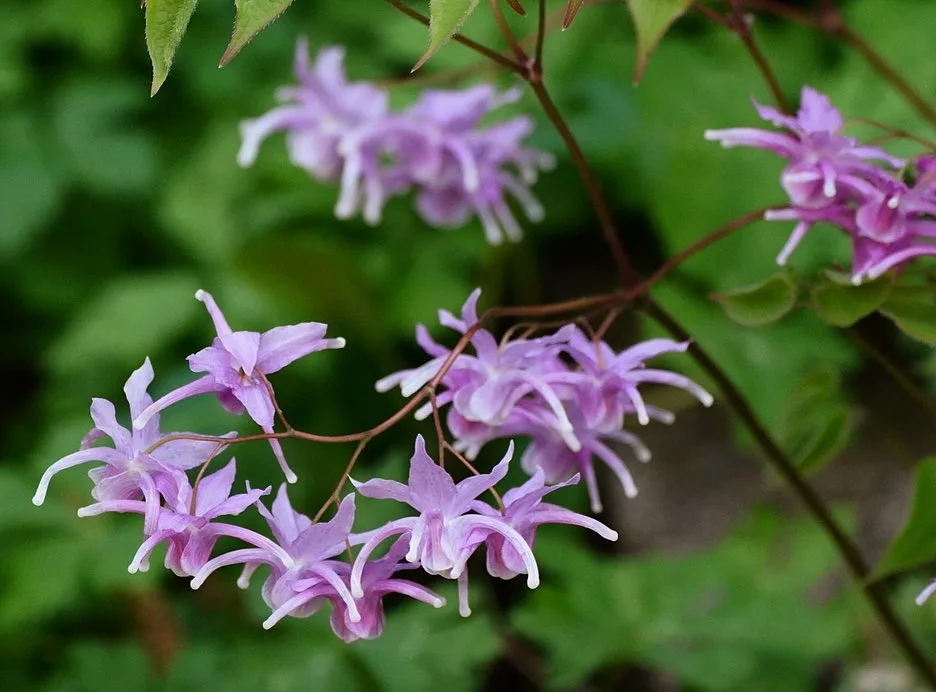
FAQs About Canterbury Bells
I’ve always found Canterbury Bells – Campanula Medium to be one of the most charming flowers in my garden. Their bell-shaped blooms add a touch of whimsy and elegance. If you’re considering adding them to your garden, here are some common questions I’ve come across, along with my personal experiences and insights.
459 Species in Genus Campanula – Bellflowers
What is Campanula Medium?
Campanula Medium is a biennial plant known for its stunning bell-shaped flowers that bloom in shades of blue, purple, pink, and white. These flowers are a favorite among gardeners and pollinators alike. The plant typically grows between 24 to 36 inches tall and can be an excellent choice for borders or cottage gardens. I love how its tall spikes create vertical interest, making it an attractive addition to my garden design.
Are Campanula Medium a Gladiolus?
No, Campanula Medium and gladiolus are entirely different plants. While both produce beautiful flowers, they belong to different families. Gladiolus belongs to the Iridaceae family, while Campanula is part of the Campanulaceae family. Gladiolus typically has sword-like leaves and grows from corms, while Campanula Medium is a herbaceous perennial that grows from seeds or transplants. This distinction is important for understanding their specific care requirements.
How to Grow Campanula Medium?
Growing Campanula Medium is relatively straightforward. Here’s how I do it:
- Location: Choose a spot that receives full sun to partial shade. I’ve noticed that they thrive best with at least six hours of sunlight.
- Soil Preparation: Campanula prefers well-drained soil enriched with organic matter. I usually mix compost into the soil to improve its fertility.
- Planting: I sow the seeds in early spring or transplant young plants in late spring. If you’re starting from seeds, sprinkle them on the soil surface and lightly cover them.
- Watering: Regular watering is crucial, especially during dry spells. However, I ensure the soil dries out between waterings to prevent root rot.
- Fertilization: Applying a balanced fertilizer once a month during the growing season helps promote lush growth and vibrant blooms.
How to Care for Campanula Medium?
Caring for Campanula Medium involves a few key practices:
- Deadheading: I regularly remove spent flowers to encourage new blooms and prevent the plant from self-seeding too much.
- Mulching: Applying a layer of mulch helps retain moisture and suppress weeds, making maintenance easier.
- Pruning: If the plant becomes leggy, I prune it back in late summer to encourage bushier growth.
How to Propagate Campanula Medium?
Propagation of Campanula Medium can be done through seeds or division. I find that starting with seeds is easier, but dividing established plants in the fall can also work well. To divide, carefully lift the plant from the ground and separate the root ball into smaller sections, ensuring each section has roots and shoots.
Do Canterbury Bells Come Back Every Year?
Canterbury Bells, or Campanula Medium, are biennials. This means they typically don’t come back every year. They spend their first year growing foliage and then bloom in their second year. However, if you’re lucky, they might self-seed and come back in subsequent years. I’ve had mixed results with this—sometimes they come back, and sometimes I need to replant them.
What Do Canterbury Bells Seedlings Look Like?
When Canterbury Bells seedlings first appear, they resemble small, rosette-forming leaves. They have a gentle, scalloped edge and a soft, green color. They might look a bit like other young seedlings, but their distinct rosette pattern helps in identifying them. I’ve found that they can be a bit slow to grow at first, but once established, they become quite robust.
Are Canterbury Bells Invasive?
In general, Canterbury Bells are not considered invasive. They’re biennial, which limits their ability to spread aggressively. However, they can self-seed and create a dense patch if not managed properly. I’ve found that regular weeding and thinning can help control their spread and keep them from becoming a nuisance.
Are Canterbury Bells Poisonous to Cats?
Canterbury Bells are not known to be highly toxic to cats. I’ve had cats roaming around my garden, and while they occasionally nibble on plants, there haven’t been any issues. Still, it’s always good to monitor your pets and discourage them from eating any plants.
Are Canterbury Bells Poisonous?
While Canterbury Bells are not highly toxic, they can cause mild irritation if ingested in large amounts. The primary concerns are digestive upset or skin irritation. If you’re gardening with children or pets, it’s wise to keep an eye on them to avoid any accidental ingestion.
Are Canterbury Bells Deer Resistant?
Yes, Canterbury Bells are generally deer resistant. In my garden, I’ve noticed that deer tend to avoid them in favor of more palatable plants. They have a somewhat tough texture that deer find unappealing, making them a good choice for gardens prone to deer browsing.
Do Canterbury Bells Bloom All Summer?
Canterbury Bells bloom primarily in the summer, typically from late spring to early summer. In my experience, they have a peak bloom period that lasts several weeks. They don’t usually bloom all summer long, but the display they offer during their peak is quite stunning.
Do Canterbury Bells Bloom the First Year?
No, Canterbury Bells generally do not bloom in their first year. They use the first year to establish a strong root system and foliage. It’s during their second year that they usually put on a beautiful show of blooms. Patience is key with these plants.
Do Canterbury Bells Self-Seed?
Yes, Canterbury Bells can self-seed. I’ve found that they often drop seeds after flowering, leading to new plants in the following year. While this can be a pleasant surprise, it’s also something to manage, as the seedlings can spread if not kept in check.
How Long Do Canterbury Bells Bloom?
The blooming period for Canterbury Bells usually lasts around 4 to 6 weeks. In my garden, they tend to have a very focused, intense bloom period that adds a burst of color for several weeks. After this, the blooms fade, but the plant remains attractive with its foliage.
How Tall Do Canterbury Bells Grow?
Canterbury Bells can grow quite tall, typically reaching heights of 2 to 3 feet. Some varieties might be a bit shorter or taller, but this is the general range I’ve observed. Their height makes them a great background plant for garden beds or borders.
Canterbury Bells vs. Foxglove
Canterbury Bells and Foxglove (Digitalis purpurea) are often confused due to their similar bell-shaped flowers. However, there are a few key differences:
- Bloom Time: Foxgloves tend to bloom a bit later than Canterbury Bells.
- Growth Habit: Canterbury Bells usually form a more compact rosette, whereas Foxgloves can grow quite tall and leggy.
- Toxicity: Foxgloves are more toxic than Canterbury Bells, containing compounds that can be harmful if ingested.
Both plants are beautiful, but knowing these differences can help you choose the right one for your garden.
Conclusion
Incorporating Canterbury Bells into your garden can add a delightful touch of color and charm. By understanding their growth habits, care requirements, and how they compare to similar plants, you can make informed decisions and enjoy their beauty year after year.
If i die, water my plants!



